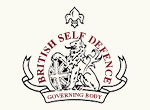Other situations may arise where you may lawfully restrain a person. The Police and Prison services are just two examples where restraints may, in appropriate circumstances, be lawfully used in accordance with the appropriate procedures.
The health and caring professions are other examples of where it may be lawful to restrain a person. This might, for example, occur in a hospital or care setting (including care in the community) where nursing care is provided.
An adult who may be at risk may, in appropriate circumstances, be restrained:
It is good practice, wherever reasonably practicable, to discuss the question of restraint with the patient or service user and/or their relatives or friends as well as other members of the care team and any other agencies that might be involved. This will provide the most appropriate environment for care where all relevant persons can be considered partners in the patient’s or service user’s care and where such discussions inform the decision about restraint. Of course, in the case of an emergency, such consultation will not be possible.
Restraint should only ever be used as a means of last resort where failing to act will place in danger (or greater danger) the patient or service user, or others. In a significant number of cases, the use of physical restraint can be avoided (or substantially reduced) by proactive and positive changes to the provision of care as well as changes to the environmental setting.
It should be noted that in some countries acceptable methods of restraint include restraining vests, belts and cuffs designed to restrain the person in their bed or chair. These forms of restraint are not acceptable in the UK in the healthcare or therapeutic settings.
Restraints may be legally justified in several circumstances. For example:
It might also be the case that staff are under a positive duty to restrain a patient or service user in the above circumstances and may be in breach of their duty of care if they fail to do so.
The first example given above involves the patient or service user freely giving informed and voluntary consent. Threats, implied threats, coercion or manipulation of any kind must not be used to obtain this consent and any of these behaviours are likely to render any consent invalid even if given by way of a signed consent form.
Consent has recently been clarified by the Mental Capacity Act 2005 (“the MCA”). The MCA applies only to England and Wales although similar principles apply in Scotland under the Adults with Incapacity (Scotland) Act 2000.
It is also important to consider the situation where the individual lacks legal capacity and may not be able to make some decisions for themselves.
Section 3 (1) of the MCA provides a legal definition of what is meant by a person who lacks capacity to make decisions:
In these circumstances, the MCA permits restraint to allow for treatment provided it is in the best interests of the patient or service user. Sections 6 (2) and 6 (3) of the MCA provide that:
Restraint for these purposes is defined under section 6 (4) of the MCA as:
Section 6 (5) of the MCA emphasises that the member of staff will exceed that permitted as a lawful restraint if he deprives the patient or service user of his liberty within the meaning of Article 5 (1) of the Human Rights Convention (whether or not the member of staff is engaged by a public authority).
Section 6 (6) does not authorise a person to do an act which conflicts with a decision made, within the scope of his authority, by a donee of a lasting power of attorney granted by the patient or service user or a deputy appointed for him by the court.
Finally, section 6 (7) makes clear that there is nothing in section 6 (6) that prevents a person from providing life-sustaining treatment or doing any act which he reasonably believes to be necessary to prevent a serious deterioration in the patient’s or service user’s condition while a decision in relation to any relevant issue is sought from the court.
It can be seen, therefore, that where restraint is being considered for a patient or service user who lacks the necessary capacity, the MCA permits treatment to be provided as long as the treatment is in his best interests. The requirements of “best interests” are set out in section 4 of the MCA.
A person’s remedies for unlawful restraint
If a patient or service user is unlawfully or unreasonably restrained they may have a civil claim in negligence against the member of staff and/or their employer who remains vicariously liable for the actions of their employees carried out in the course of their employment. The actions of the staff will then be examined by a court to ascertain whether they fell below the standard of a reasonably competent employee in all of the circumstances of the case. Expert evidence is likely to be called to assist the court in coming to a decision on this matter. Not only will it be necessary to establish that it was reasonable to restrain the patient or service user but also that the restraint used was itself reasonable. It is therefore important for staff to be trained in the management of violence and aggression and in the use of therapeutic and safe methods of physical interventions.
The unlawful use of restraints may also constitute a criminal offence for which the member of staff could face criminal prosecution that could result in a conviction and a fine or term of imprisonment. It is essential, therefore, that staff act at all times in accordance with accepted professional standards and that they are fully able to justify their actions in the particular circumstances of the case.

British Self Defence Governing Body Ltd.
Registered in England & Wales under registered number 02739213. PO Box 237, Wirral, CH31 9FL, England.